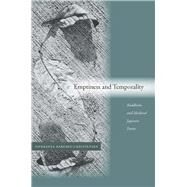Emptiness and Temporality
, by Ramirez-Christensen, Esperanza- ISBN: 9780804748889 | 0804748888
- Cover: Hardcover
- Copyright: 3/20/2008
Emptiness and Temporalityis an account of classical Japanese poetics based, for the first time, on the two concepts of emptiness (J.ku) and temporality (mujo) that ground the medieval practice and understanding of poetry. It clarifies the unique structure of the collective poetic genre calledrenga(linked poetry) by analyzing Shinkei's writings, particularlySasamegoto.This book engages contemporary Western theory, especially Derrida's concepts ofdifferanceand deconstruction, to illuminate the progressive displacement that constitutes the dynamic poetry of the renga link as the sequence moves from verse 1 to 100. It also draws on phenomenology, Heidegger'sBeing and Time,Bakhtin's notion of the dialogical, Gadamer'sTruth and Method,hermeneutics, and the concept of translation to delve into philosophical issues of language, mind, and the creative process. Furthermore, the book traces the development of the Japanese sense of the sublime and ineffable (yugenand its variants) from the identification, by earlier waka poets like Shunzei and Teika, of their artistic practice with Buddhist meditation (Zen orshikan), and of superior poetry as the ecstatic figuration of the Dharma realm.Emptiness and Temporalityconstitutes a radically new definition of Japanese poetry from the medieval period onward as a symbolist poetry, a figuration of the sacred rather than a representation of nature, and reveals how the spiritual or moral dimension is essential to an understanding of traditional Japanese aesthetic ideals and practices, such as No performance, calligraphy, and black-ink painting.






